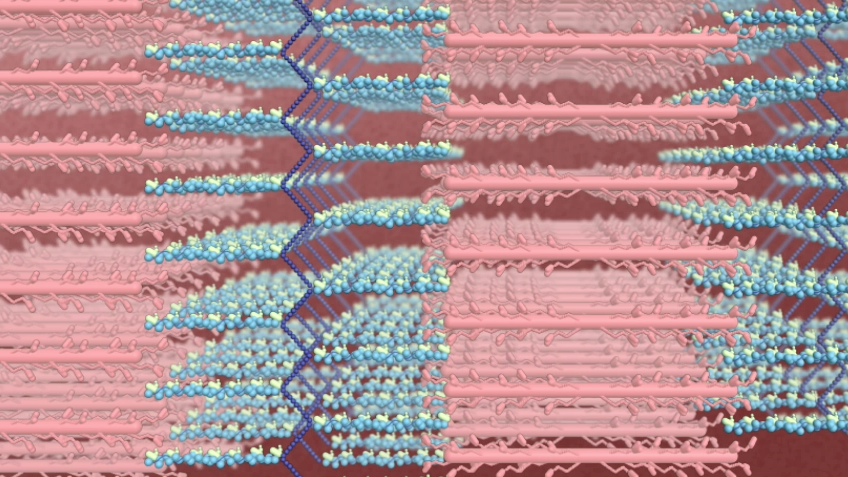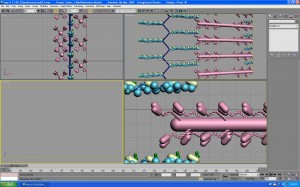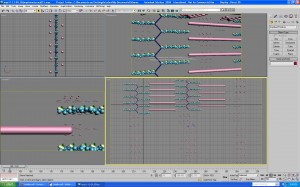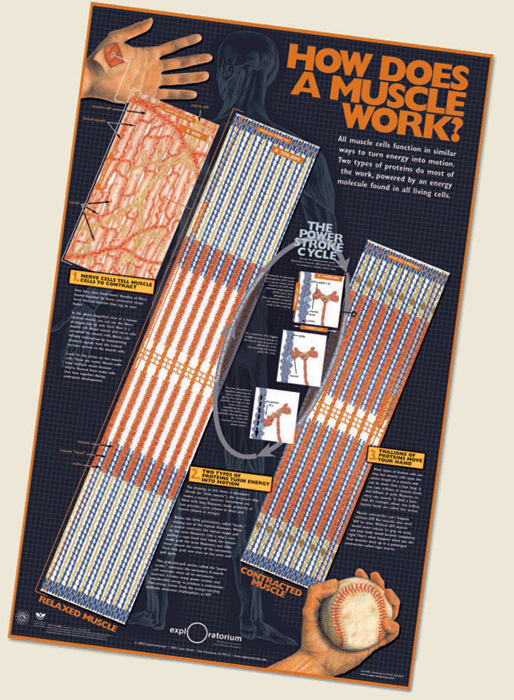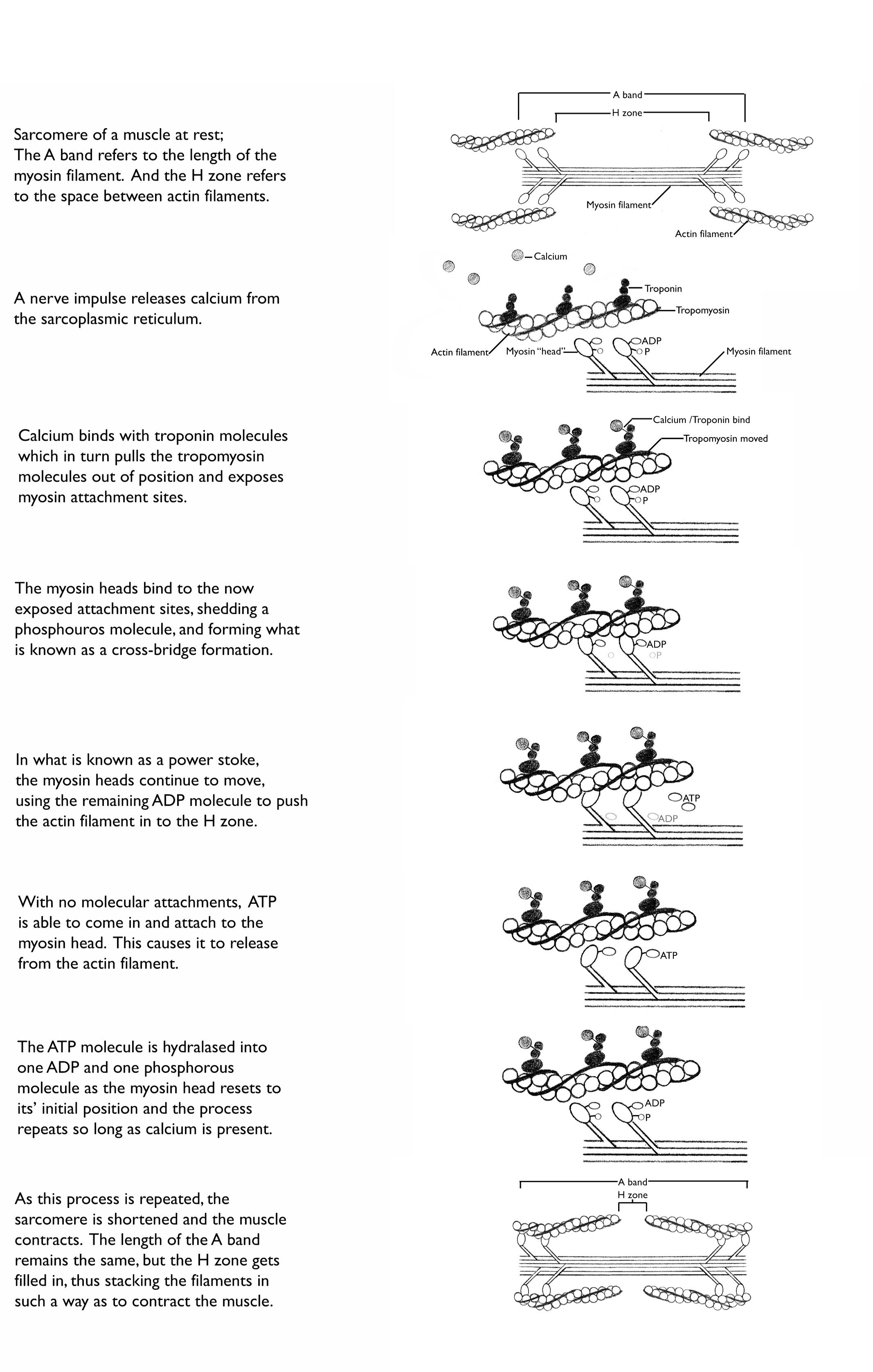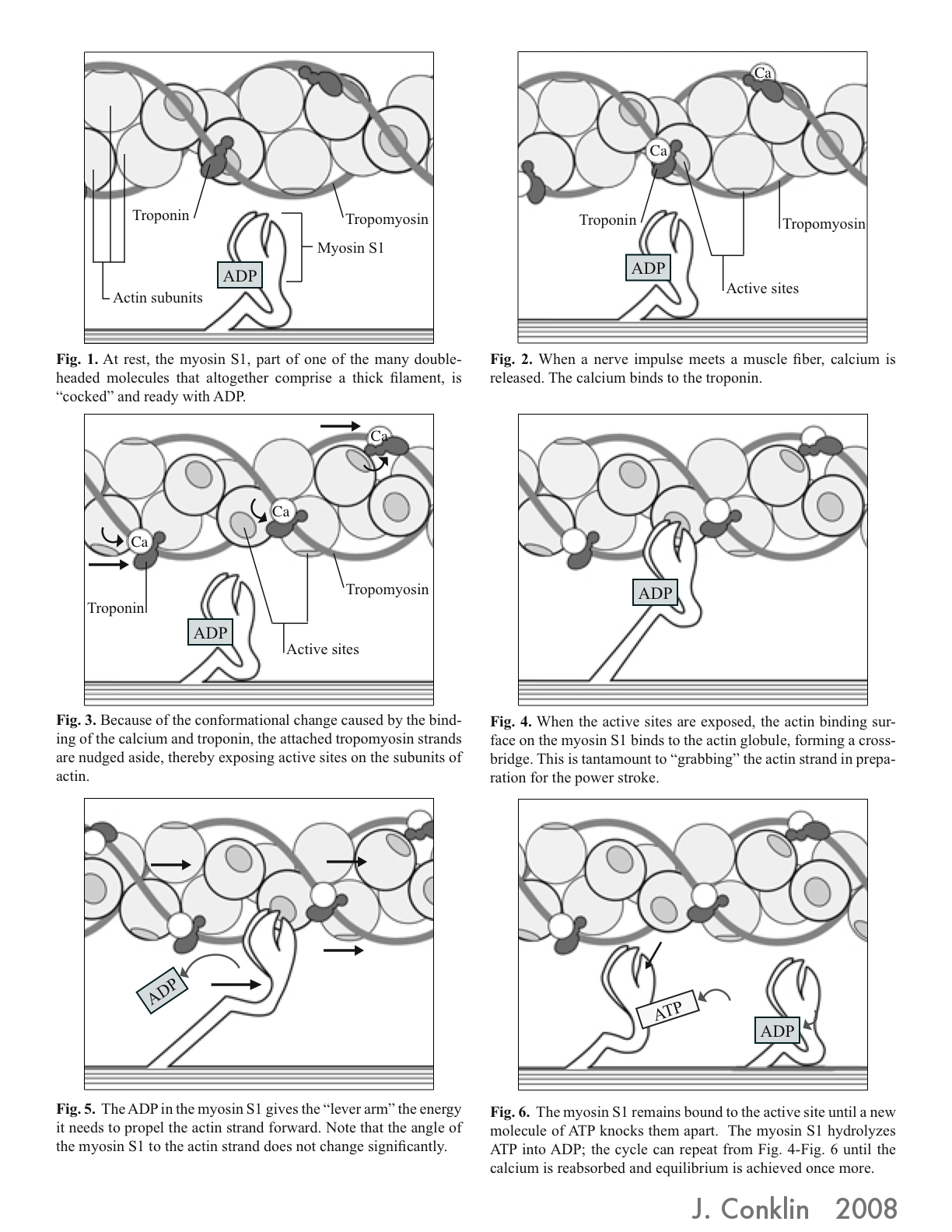Archive for the ‘sliding filament’ tag
Sliding Filaments on the Move
So, a cool thing happened last week. A woman from the Museum of Science in Boston contacted me about using a few seconds from my sliding filament animation in a presentation at the museum. Basically, she wanted the part where the filaments are seen sliding past one another en masse.
It’s really a small contribution, but I can’t help but feel happy to think of my work being used in what sounds like a really awesome museum and further shaping how visiting students think about this process. I suppose that’s a lot of what I like about working at Sapling Learning too.
Those of you who have been reading here for a long time now, may remember more exasperated posts about the making of that very shot. There was a time when I really thought that I might have mucked up my whole grad school potential by getting myself stuck with this one. Halfway through the semester in my first 3D animation class at UIC I realized that I’d come up with a plan that 3DsMax didn’t want to let me do. I thought that if I didn’t get it, my animation wouldn’t be any good, if I could even find a way to finish it at all, and I might fail the class, and never get anywhere with this whole 3D animation thing. Well, I did get it, and as of tonight that animation has had 227,517 views on YouTube, and in the very near future, that one little shot will be worked into a Museum of Science stage presentation and I currently work as a 3D animator, and well, that just all feels pretty damn cool.
Oh, and if you watch any of the stage presentations in that link, the woman you see presenting there is Karine Thate. She’s the one who contacted me. Apparently she not only performs these presentations, but also puts them together herself. That sounds like a pretty awesome job too.
Sliding Filament Video, Still Being Watched Apparently
Wow, my first YouTube video to surpass 20,000 views, and it’s my educational piece about the sliding filament theory of muscle contractions from my Animation 1 class with Greg Blew. Neat. I just wish I had said adenosine right, instead of muddling the word into adenine as I’d thought it was supposed to be said at the time. Just the same, it seems to be helping people understand the process.
Video Posting
So last night I finally signed up for a Vimeo account. If you’re not familiar with them, these are the guys who’ve basically stepped up the game a bit from YouTube. I posted my Sliding Filament animation there, and it does in fact look better than it did at YouTube even though I still wasn’t able to post my best files. If you’ve ever wondered about the quality difference between the two sites, well here’s a chance to take a compare the same work at both…
At Vimeo – http://www.vimeo.com/9849163
At YouTube – http://www.youtube.com/watch?v=0kFmbrRJq4w
And if not, well then carry on.
Animation Finished!
This week I finally finished the 3D animation that I have been working on this semester. It’s subject is the sliding filament theory of muscle contraction and I believe that I have managed to put together something clear.
I find that I still struggle in places with 3DsMax, but learning After Effects and coming back to working in Final Cut Pro again was a lot of fun. Our class on the whole created some really great work.
Animation Woes
I’m going to try something a little bit differently here today. I’m going to write about a problem that I have been encountering lately using 3DsMax. Maybe, just maybe, someone reading here will have some insight.
So, I’ve been taking a class lately on medical 3D animation. For my topic, I chose to delve further into the sliding filament theory of muscle contraction. I was having a little trouble getting the myosin necks to move appropriately and the advice to that was to use bones. Having never done that before, it’s been a madhouse of tutorials and learning all that I can about using them. It took a little while but I finally got them to work. Now, being an individual neck of the myosin, it made sense to instance the little heads and neck cluster across the myofilament, and then instance the myofilament itself to build the 3D reality of how myosin and actin myofilaments interact.
Sounds great right? Well I thought so. And I sure was excited when I finally got the bones set up with inverse kinematics, and the myosin heads and neck shape skinning it without distortion. I made a bunch of instances, and the whole row of them would do a little chorus line dance when I pulled the strings on the lead myosin head and neck group. The next part is where it starts to get wonky.
So I took my instances and carefully placed them all along the body of the myofilament. I found that removing the kinematics and bones from the instances allowed me more flexability in placement and still kept the movements I was after. Everything looked great. You might even say it was fantastic. But after several rebuilds of my scene, I have come to learn that this is the exact point where things go haywire. I have been saving the project all along, but it seems that I cannot open any of the saved versions after this point. Well, I *can* open them, but it’s never the way I’ve left it.
So for instance, this is a screen shot of my happy little project *prior* to turning anything off, or shutting down…
Then this is what happens when I open the same project later (I believe there are actually a few minutes of work between these two screen shots, but not much). The myosin heads and necks fly off, out into my scene. As you can see, I’m hitting a glitch…
So I spoke with a friend about it, who has done some work in games. He had me convinced that the problem I was hitting just had to be the mirror modifier that I’d used to make the intertwined necks of the myosin heads. So I deleted and rebuilt the myosin yet again, only to learn that the mirror modifier is not in fact the problem, and I am still unable to save and reopen the project.
My modifier stack is clean as a whistle, just the object used as skin and the skin modifier. My bones on their own right are great. My inverse kinematics are just what I wanted. This happens whether objects are grouped or ungrouped. The actin myofilaments remain unaffected. So what is going on with my myosin? I am at a complete loss for this one.
If any of you reading have ever come across this before, I would love to hear about it, and particularly what you did to either fix it or get around it.
Illustrating Muscle Contraction – Many Ways to Tell the Same Story
Earlier this week, I wrote about 2007 Visualization Challenge winner, Kai-hung Fung. I couldn’t help but notice one of the honorable mentions went to artists, Mark McGowan, Pat Murphy, David Goodsell and Leana Rosetti for their poster “How Does a Muscle Work.”
It caught my eye primarily because we were assigned the same process to illustrate our first semester in the biomedical visualization program at UIC.
The process of muscle contraction is actually pretty complicated. It is best understood when looked at on both the molecular level, but then also on the level of the actual sliding filaments in order to understand what exactly is accomplished by that molecular action.
My own take on this process for the class, was to use very simple illustrations and explain the steps, with the larger view of the sarcomere at the beginning and end of the process.
Other classmates went about illustrating the process very differently.
One of my favorites was that of Josy Conklin, who went out of her way to learn the real shape of the myosin head and bring that information into her illustration.
She posts this illustration to her own blog, Josydoodle, which I recommend to anyone who enjoys reading about these kinds of things.
http://josydoodle.blogspot.com/2008/12/myosin-yourosin-hisosin-herosin.html
Other classmates included less of the explaining text, and focused more on dynamic imagery. Some represented the power stroke cycle circularly, to emphasize the repetition involved in the process.
As you can see though, there are many different ways to tell this story. And that, I would say, is one of the primary issues a medical illustrator faces. A medical illustrator not only has to understand the science to be conveyed themselves, but they then have to find the best way to convey that information to the audience at hand, and utilize the media tools available to the specific project. And as with any story, there are many ways one can tell it.
